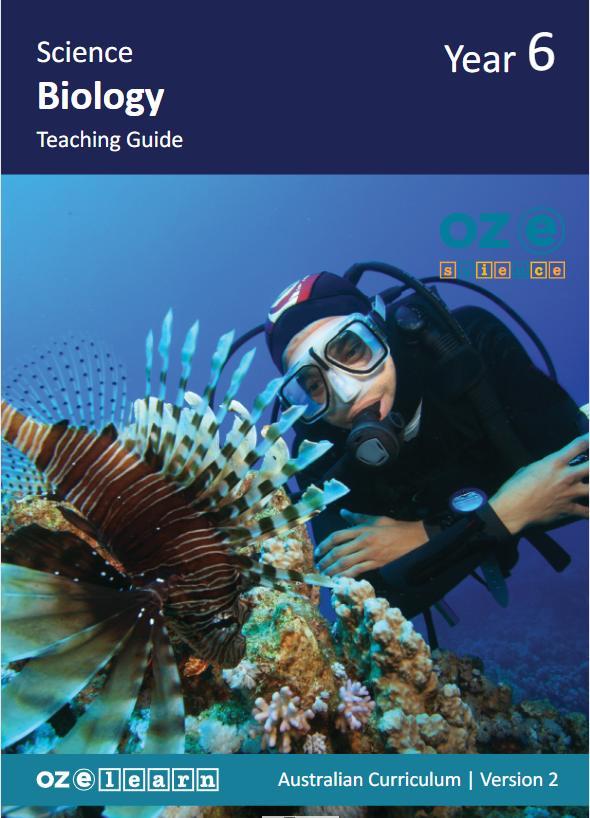Oz-e-science

Teaching resources
Extra Resources:
In Lessons 1 to 9, students learn about:
- how to identify the unique conditions on Earth that have allowed the creation of life
- how to identify the characteristics of a living thing
- how to identify the conditions living things need in order to survive
- how to plan and setup an experiment to determine the effect of changing conditions on a plant species
- how to identify different types of microscopic life and the conditions they need to survive
- how to explain why controlling factors and conditions for growing bacteria and fungi is important for our own survival
- how to identify the effects of the coronavirus and how it affects humans
- how to observe and record an experiment to determine the effect of changing conditions on a plant species
- how to explain, evaluate, and communicate the results of an experiment to determine the effect of changing conditions on a plant species.
- Identify the conditions on Earth that allowed life to form.
- Describe four theories about how life formed on Earth.
- Experiment with creating energy from mixing chemicals.
- Describe what makes something ‘living’.
- Identify the characteristics of living things.
- Create a model of a living thing.
- Describe the conditions required for humans to survive.
- Explain what happens to humans outside of these conditions.
- Identify different types of life that live in different conditions.
- Describe the conditions for plant survival.
- Explain how to set up a fair test.
- Set up an experiment to test plant survival.
- Describe what microorganisms are and their growing conditions.
- Explain how a microscope can help us see microorganisms.
- Identify microorganisms in a sample of pond water.
- Explain how bacteria and fungi grow rapidly in perfect conditions.
- Describe ways of controlling the conditions to control the growth of bacteria and fungi.
- Investigate the growth of fungi in different conditions.
- Explain how viruses affect their host.
- Identify ways to protect against viruses.
- Investigate how herd immunity can control the spread of viruses.
- Identify the conditions living things need to survive.
- Describe the result that changing a condition has on plant growth.
- Observe and record the results of an experiment.
- Explain the result of changing conditions on plant growth.
- Report the results of an experiment.
- Communicate the findings of an experiment.
Progress Tests
Progress tests are conducted after every second lesson, allowing teachers to monitor student understanding of the concepts taught over the past two lessons and to identify where reteaching is needed. The Teaching Guide contains the testing questions, and the Student Workbook has a section where students write their answers and score themselves.
Structured Research Activity
The Structured Research Activity (SRA) for this unit is as follows: Students conduct an experiment growing seeds and report on the effect of changing conditions on a plant species. The SRA takes place over two lessons so students can apply the Science Understanding and Science Inquiry Skills covered in the unit. Teachers use the Guide to Making Judgements, which is included in the Teaching Guide, to mark the SRA.
End-of-Unit Assessment
The last lesson is the end-of-unit assessment, which has a variety of question formats (e.g. label the diagram, circle the correct answer) to assess student mastery of content from the unit. The end-of-unit assessment is in the Teaching Guide. Teachers copy the assessment and distribute to students at testing time.
Progress tests are conducted after every second lesson, allowing teachers to monitor student understanding of the concepts taught over the past two lessons and to identify where reteaching is needed. The Teaching Guide contains the testing questions, and the Student Workbook has a section where students write their answers and score themselves.
Structured Research Activity
The Structured Research Activity (SRA) for this unit is as follows: Students conduct an experiment growing seeds and report on the effect of changing conditions on a plant species. The SRA takes place over two lessons so students can apply the Science Understanding and Science Inquiry Skills covered in the unit. Teachers use the Guide to Making Judgements, which is included in the Teaching Guide, to mark the SRA.
End-of-Unit Assessment
The last lesson is the end-of-unit assessment, which has a variety of question formats (e.g. label the diagram, circle the correct answer) to assess student mastery of content from the unit. The end-of-unit assessment is in the Teaching Guide. Teachers copy the assessment and distribute to students at testing time.

